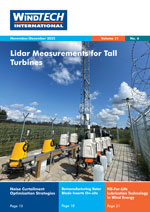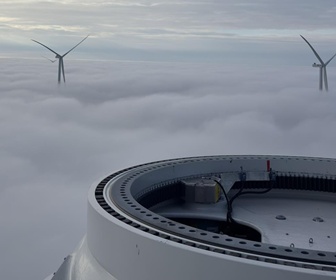The global offshore wind sector reached a cumulative installed capacity of 83 GW by the end of 2024, according to the Global Offshore Wind Report published by the Global Wind Energy Council (GWEC). This follows the addition of 8 GW of new capacity last year, a 26% decline compared to 2023. Offshore wind now accounts for 7.3% of global wind capacity, with the sector maintaining steady long-term momentum despite near-term headwinds.
While 2024 saw a slowdown in new connections, the industry’s medium- and long-term trajectory remains strong. Governments awarded 56 GW of new capacity through auctions last year, and a further 48 GW is currently under construction worldwide. However, macroeconomic uncertainty, supply chain disruptions, failed auctions in countries such as the UK and Denmark, and increased policy instability in the USA have contributed to a 24% downgrade in GWEC’s short-term forecast compared to last year.
GWEC emphasises that to sustain progress, governments and industry stakeholders must work together to redesign auction frameworks with a focus on project delivery and fairer risk sharing. This, the report argues, is key to unlocking the full potential of offshore wind as a large-scale source of secure, clean energy.
China led global offshore wind installations for the seventh consecutive year, followed by the UK, Taiwan (China), Germany and France. Together, these five countries accounted for 94% of all new capacity added in 2024. China remains the dominant market overall, making up roughly half of total global offshore wind capacity. The UK follows, with Germany, the Netherlands and Taiwan (China) completing the top five. Denmark, long considered a pioneer in offshore wind, dropped out of the top five markets for the first time.
The sector’s global average growth rate over the past decade was around 10% per year, but future growth is expected to accelerate. Annual offshore wind installations are projected to grow from 8 GW in 2024 to over 34 GW by 2030, with growth rates averaging 28% until 2029 and 15% up to 2034.
While most current activity is concentrated in Europe and China, new offshore wind markets are emerging in Asia-Pacific and Latin America. Countries such as Japan, South Korea, the Philippines, Vietnam, Australia, Brazil and Colombia are establishing policy and regulatory frameworks to fast-track development. The report highlights these efforts as critical to diversifying offshore wind growth beyond the established markets.
At the end of 2024, the global installed capacity of floating wind reached 278 MW. Norway leads with 101 MW, followed by the UK (78 MW), China (40 MW), France (27 MW), Portugal (25 MW), Japan (5 MW) and Spain (2 MW). Although still at an early stage, floating wind is expected to play an increasingly important role in future offshore development, particularly in regions with deep waters or complex seabed conditions.
GWEC forecasts a compound average growth rate of 21% for offshore wind over the next decade. This would see an additional 350 GW of capacity installed between 2025 and 2034, bringing global offshore wind capacity to 441 GW by the end of the period.
Annual installations are expected to double in 2025 and triple by 2027, surpassing 30 GW per year by 2030 and reaching 55 GW by 2034. By then, offshore wind is expected to account for approximately 25% of all new wind power installations globally, up from 7% today.
Although China and Europe will continue to dominate the sector, their combined share of cumulative global offshore wind capacity is projected to fall from over 90% today to 89% in 2029 and 84% by 2034, as markets in North America, Asia-Pacific, and Latin America continue to grow.










